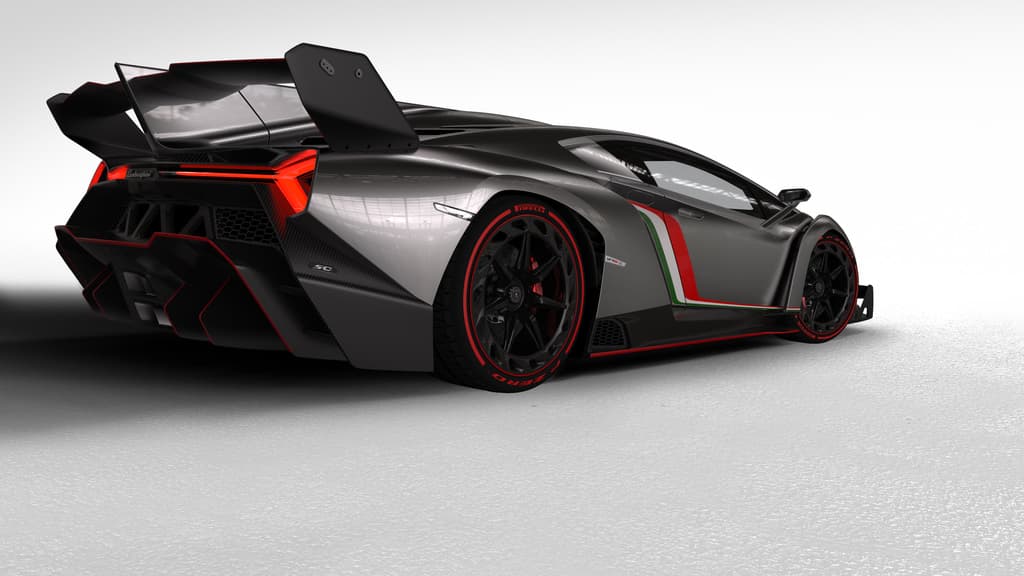Lamborghini, throughout the years, has always had a certain thing about the way they design their cars. There is always something about them that sets them apart, makes them just that little bit more special, that little bit more desirable.
While many models have passed through the doors of the Sant’Agata Bolognese factory, a select few that have emerged have gone on to become icons. They could be famous for being outright crazy, for pushing technology and materials to a new level, or for simply being some of the best looking Italian supercars made. No matter the reason, it is part of the mystique that is the raging bull brand, and thankfully, throughout all the years, they’ve embraced it.
Today, we have Lamborghini’s most famous models, and the reasons that they became famous. This is not as much a technical discussion, with horsepower and engine cylinders at the top, as it is about why these cars made it into the “I really want that” list of pretty much everyone that saw or drove them.
1996 Lamborghini Diablo SV
The Lamborghini Diablo is a legend, pure and simple. We all understand that, we all acknowledge it, but what about it defines it as one of the most legendary supercars? To be fair, in the first few years of its existence, as simply the Diablo, it was a beautiful car that attracted a lot of eyes to it. It kept the wedge shape that Lamborghini had been famous for over 2 decades for, but compared to the Countach, it seemed almost a bit too clean.
That all changed in 1995, when at the Geneva Motor Show, the Diablo SV was publicly unveiled as the ultimate version of the Diablo at the time. All of a sudden, that sterile, clean, smooth supercar had a big wing across the back, two air scoops popping over its roof for the engine, and a more aggressive stance. It also helped that the 5.7L V12 in the rear got nearly 50 more HP over the standard model, but the SV’s contribution in making the Diablo a legend was where you saw the most of them.

Seeing a Diablo SV on the street was, and still is, an exceedingly rare thing. Yet, in the mid to late 1990s, you saw them everywhere, especially if you were a kid or in your teens, because the Diablo SV was the poster car. There were posters of other supercars, sure, but almost anyone under the age of 18 that had even a passing interest in Italian cars had a Diablo or Diablo SV poster on their wall, and because of that, a generation remembers the Diablo as the greatest supercar of all time.
2010 Lamborghini Sesto Elemento

The Lamborghini Sesto Elemento is famous for two particular reasons.
The first reason is because Lamborghini teamed up with Boeing, and together the two worked on creating an entirely new material. Lamborghini wanted it to make cars with, and Boeing wanted it to make aircraft parts out of. It needed to be extremely strong, yet flexible and light. What resulted from the joint venture was an entirely new form of carbon composite that is a combination of carbon fiber and a highly flexible but strong plastic.

The second reason the car is famous is because of a certain clip making the rounds of several video sites of a quite short British fellow from a small motoring show that took the car out for a little drive around Imola. When Top Gear presented the segment on the car with Richard Hammond, there was a noticeable jump in internet statistics of searches for the car. For a short while, it also became one of the most uploaded videos on YouTube, and even to this day, some of those uploads are still present and have several hundreds of thousands of views.

Add to this that the official upload from Top Gear themselves has over 9 million views since 2014, and its fame is pretty much solidified.
1971 Lamborghini Miura P400 SV

The Lamborghini Miura P400 SV is quite possibly one of the most important cars ever made. Not because it’s a famous Lamborghini, but because of the term that was used to describe it. That term has since become a label, a moniker, if you will, of high performance cars that exist on a different level from the “normal” cars.
That’s because the 1971 Lamborghini Miura P400 SV is the world’s very first supercar.
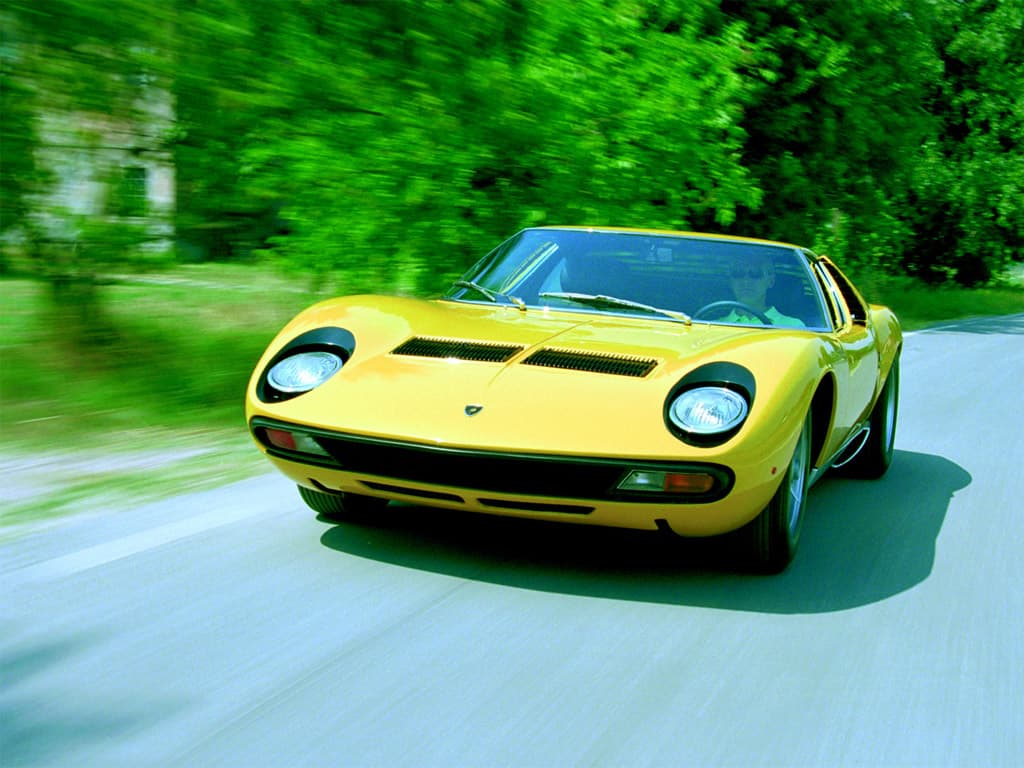
While the original Miura and the P400 S both were hailed as supercars, it is agreed that the P400 SV is the definition of a mid-engined, rear-wheel-drive supercar. This comes from the fact that the engine was boosted to 380 HP from its original 345, as well as having the term Spinto Veloce (SV) appended to its name.
LamboCars writer, Mark Smeyers, shared an interesting fact during the publishing process. On the Miura, the SV stood for ‘Spinto Veloce’. For the Diablo SV, this was changed to Sport Veloce while it was only on the Murciélago it became Super Veloce.
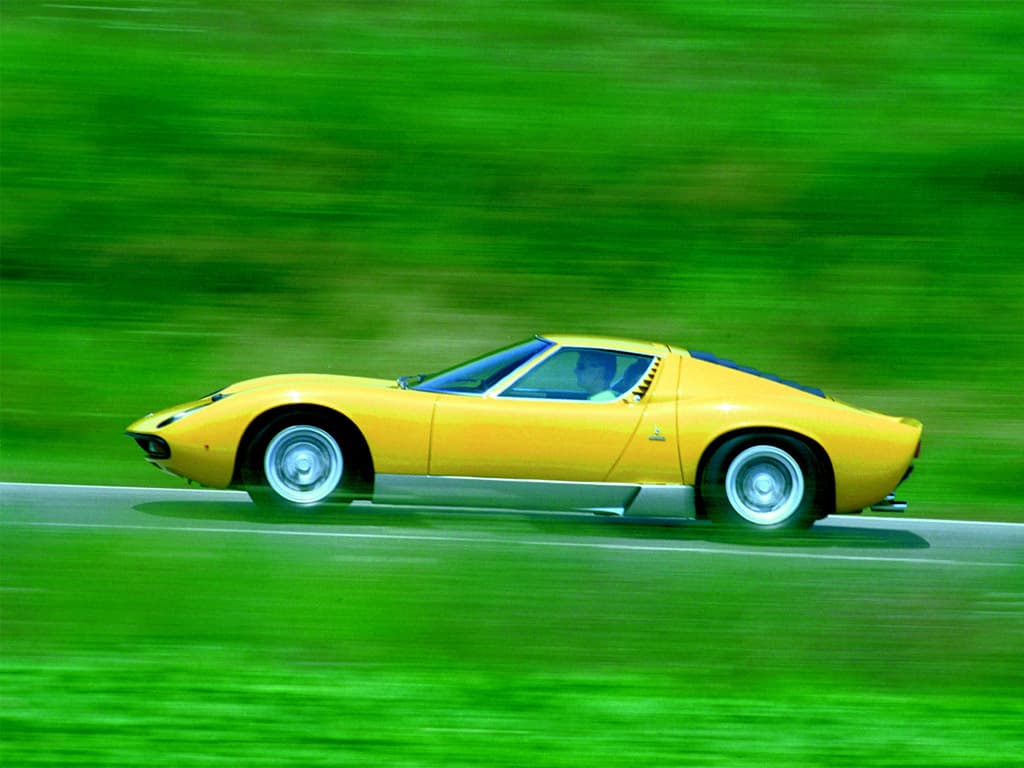
Another reason it has been hailed as the first supercar is because the SV added so many things that became standard for multiple supercars for the next 30 years. This includes wide rear wheel wells for larger tires, upper and lower air intakes for the engine and other components, the engine being near or over the center of gravity, and bespoke parts that made it the ultimate Miura.
2001 Lamborghini Murcielago

In 1998, after an almost literal game of hot potato of who owned Lamborghini, Audi bought the company outright. A facelifted Diablo was produced soon after the takeover, but there was something brewing in the design department, especially after Luc Donkerwolke took over as Head of Design in Sant’Agata Bolognese.

What emerged in 2001 was the Lamborghini Murcielago. Some immediately crowned it a masterpiece, some thought that it lost some of the famous Italian craziness, but almost all agreed that it was one hell of a car. It also kept the classic Lamborghini V12 engine, in its final two forms: 6.2L with 570 HP for the standard coupe and roadster, and 6.5L with 630 to 660 HP used for the LP special editions that came after.

What truly made the Murcielago famous, however, was that it combined Italian flair and German minimalism in a package that just worked. It was also the first Lamborghini to feature moveable parts, with the buttresses opening at higher speeds to scoop more air into the engine. It wasn’t the flashiest Lamborghini ever, but it was an understated, clean-slate approach to what a modern version of the classic supercar should be.
2008 Lamborghini Reventon

If the Murcielago was an understated design, the Lamborghini Reventon is when the German parents let the Italian kids have a little fun, and they had more than a little. Based on a Murcielago LP640-4, the Reventon was styled to resemble the fastest, most powerful fighter jets in the world. There are elements of the F-22 Raptor in the nose, the Eurofighter Typhoon in the way the lower air scoops are shaped, and the instrument cluster has an option to appear like a F-117 Nighthawk heads up display.
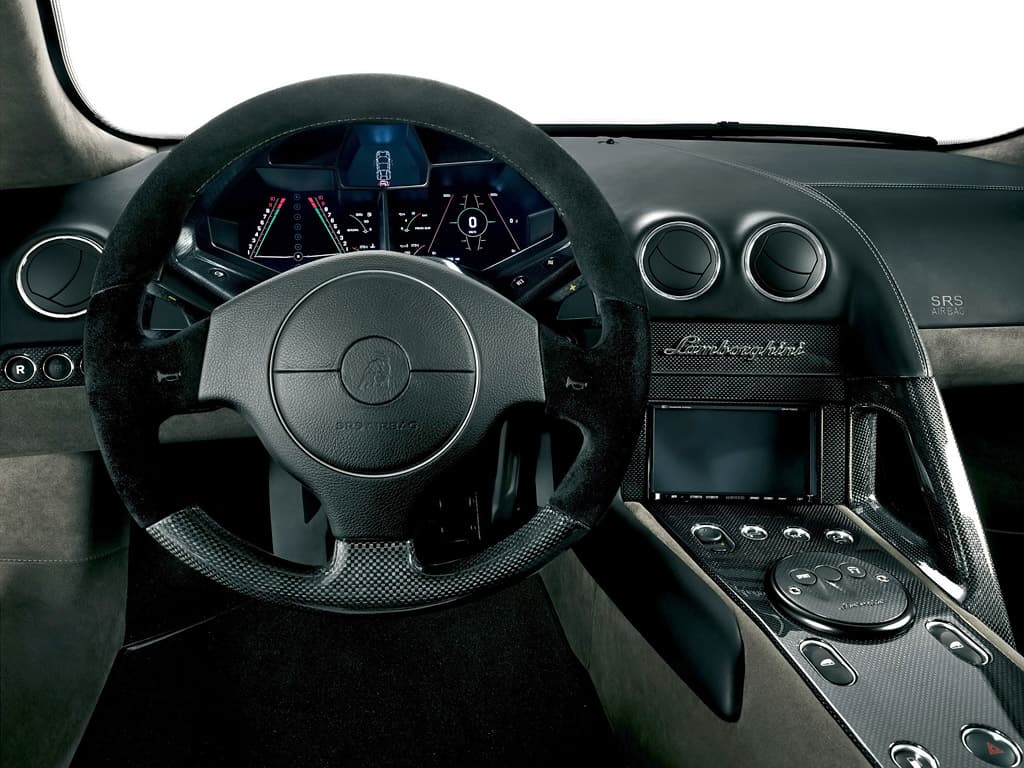
Only 21 Reventon coupes were built, with 20 for customers and one for the Lamborghini Museum that bears the chassis designation 00/20. They were some of the first supercars in the new millennium to list at over $1 million USD, and were highly sought after as the “perfect version of the Murcielago.”

A Reventon roadster was made after the coupes were finished, and only 15 were built. Both the coupe and roadster could top 200+ MPH flat out, and both accelerated to 60 in under 3.5 seconds. The reason that both were so extremely expensive was significant use of carbon fiber, as well as being special editions, but it was the influence of the greatest combat jets of the time that gained them most of their fame.
There is one other small touch that makes the Reventon worthy of its time in the spotlight, as the angles, shapes, and influences of the body became the design basis for the follow up to the Murcielago, the Aventador. Because it allowed the follow-up car to be a little more wild, a little more Italian in its flair, it also allowed some of the special edition Aventadors to go completely off the rails, as we will discuss shortly.
1985 Lamborghini Countach LP5000QV

There are multiple reasons that the Lamborghini Countach is a famous car. Before the Diablo, it became the poster car of a generation, as well as being one of the more extreme examples of Italian 1970s styling. It is the car that solidified Bertone as a modern design house, after years of working on classic shapes and classic cars. It was also the car that solidified the “Italian Wedge” shape that still influences Lamborghini designs to this day.

However, the Countach LP5000QV is the car that gained the most fame. It was the most powerful, with almost 420 HP. It was the first evolution of the Lamborghini V12 to use four valves per cylinder, hence the QV or QuattroValvole. But what brought it to the peak of stardom was the massive wing that was added, as well as the reshaped air intake scoops on the rear buttresses. It made the Countach look like a monstrously powerful supercar. To top it off, the Countach was also the car that introduced possibly the most famous Lamborghini trademark of all, the scissor doors.
1964 Lamborghini 350 GT
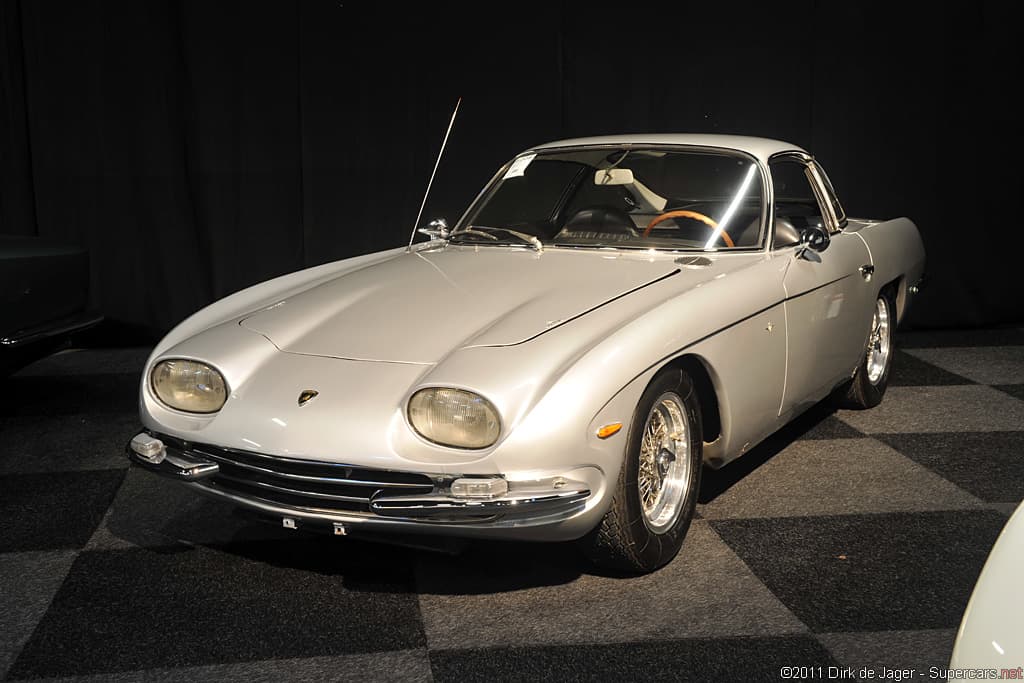
It is impossible to talk about famous Lamborghini’s without paying respect to the original. The 350 GT is the car that Ferrucio Lamborghini envisioned when establishing the automotive side of his business, a classic grand touring berlinetta with a V12 up front, drive to the rear, and a 5-speed manual in the middle. It could not have been any more Italian in its design or production.

What made it famous, however, is that it proved that Lamborghini was able to mass produce cars, despite only being sold for two years, and having only 150 made. The original engine, developed by Giotto Bizzzarrini, was not suited to mass production, so another famous Italian name, Gian Paolo Dallara, came in and reworked the V12 into the 3.5L, 280 HP legend that was in every flagship Lamborghini in some variation or another until the Aventador.
2013 Lamborghini Veneno

The Lamborghini Veneno is famous for being, in a word, crazy. If the Reventon was the kids having fun and the Aventador letting the design department be influenced by the Reventon, then the Veneno is what happens when you take the shackles off the Italians entirely.

The Veneno is the first car in a generation that many felt returned Lamborghini to appropriate levels of bonkers design. It is just angles, wings, spoilers, vents, everything that you would want from a crazy car. However, there is method to the madness, and not only is the Veneno, which is based around the Aventador’s 6.5L V12 turned up to 740 HP, extraordinarily fast with 221 MPH as its top speed, it is also extremely stable all the way up.

This is because while it looks extreme, it is designed with sports prototype racers in mind. It has a shark fin stabilizer on the rear to keep it planted in the corners. It has venturi tunnels under the car, and the splitter and air dams in the front direct the air either down under the car, or up through the hood to pass over the car, adding downforce. The entire central tub of the chassis is built as a one piece monocoque, just like a prototype racer.
Only 14 Venenos exist, with 4 coupes and 10 roadsters, one of the few times a roadster production has outpaced coupe production in Lamborghini history. As indicated by our LamboCars writer Mark Smeyers, there were 3 Veneno sold to customers and one Veneno kept by the factory. The same allocation occured with the Veneno Roadster where 9 were sold to customers and one was kept by the factory.
Yet, if the Countach was the poster car for the 80s, the Diablo for the 90s, and the Reventon for the 2000s, the Veneno is the car that deserves to be the poster car for the 2010s, when the Italians made a crazy looking sports prototype that was road legal and actually worked as a prototype should.
2019 Lamborghini Huracán EVO
The Lamborghini Huracán, since its debut in 2014, has been the bedrock of Lamborghini’s modern line-up, succeeding the revered Gallardo. But even legends evolve, and in 2019, Lamborghini unveiled its masterpiece in evolution: the Huracán EVO.
The Huracán EVO is a nod to the unyielding nature of Lamborghini – always chasing perfection, never complacent. If the standard Huracán was a roaring lion, the EVO is the alpha – fiercer, swifter, and more agile.
Underneath its sculpted hood lies a naturally aspirated 5.2L V10 engine, exuding a staggering 631 HP. It can hurtle from 0 to 62 mph in a mere 2.9 seconds, a testament to its enhanced aerodynamics and lightweight build. But the EVO isn’t just about raw power; it’s about intelligent power. One of its crowning innovations is the Lamborghini Dinamica Veicolo Integrata (LDVI) system, a central control unit that adapts to the driver’s moves to provide optimal driving dynamics.
The design, both exterior and interior, bears the hallmark of Italian craftsmanship. The front bumper is adorned with larger air intakes, hinting at the beast within. The rear showcases a new integrated spoiler, enhancing downforce and aerodynamic efficiency. Inside, an 8.4-inch touchscreen infotainment system is a noteworthy addition, a nod to the fusion of technology and luxury.
But the Huracán EVO is more than a spec sheet; it’s an experience. It’s about hearing the raw symphony of the V10, feeling the g-forces pushing you into the seat, and witnessing the world blur, all while being cocooned in luxury.
In essence, the Huracán EVO stands as a testament to Lamborghini’s commitment to evolution without forsaking its roots. It carries the legacy of its predecessors, yet dares to push the envelope, resulting in a machine that isn’t just faster, but smarter, more attuned to its driver, and, unequivocally, a symbol of modern Lamborghini prowess.
If the Miura was the pioneer, the Countach the revolutionary, and the Aventador the embodiment of might, then the Huracán EVO is the future-bearer, a car that doesn’t just meet expectations, but effortlessly soars above them.
2018 Lamborghini Urus

The Lamborghini Urus is not just a car, but a testament to the brand’s desire to challenge the boundaries of possibility. If the world thought Lamborghini was solely about speed, the Urus gave them a reason to reconsider.
Dubbed as the ‘Super SUV’, Urus is Lamborghini’s audacious leap into the luxury SUV market. And boy, did they make an entrance! By integrating the power-packed performance of a supercar with the utility of an SUV, Lamborghini created a juxtaposition so masterful, it made every petrolhead sit up and notice.
At the heart of the Urus is a 4.0L V8 twin-turbo engine that pumps out a staggering 641 HP, propelling the beast to 62 mph in just 3.6 seconds. But speed isn’t its only ace; the Urus flaunts a design that is breathtakingly sleek, yet robust, in line with the athletic elegance of Lamborghini’s DNA. While its angular lines and distinctive Y-shaped headlights echo the aggressive looks of its supercar siblings, its tall stature and broadened physique firmly establish its SUV credentials.
However, the real genius of the Urus is its adaptability. It’s not just a city roamer; with six driving modes, including ones for sand, dirt, and snow, it is prepared to conquer any terrain. The inclusion of rear-wheel steering provides a tighter turning radius in the city and stability at high speeds.
Having debuted in 2018, the Urus proved to be a sales revelation for Lamborghini, accounting for almost half of their total sales in 2019. This was the car that wasn’t just meant for the Lamborghini aficionado but for the wider audience who wanted luxury, performance, and utility rolled into one exquisite package.

